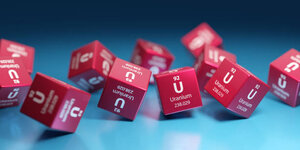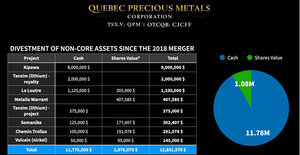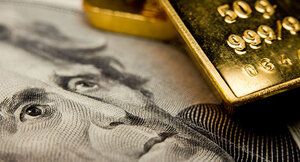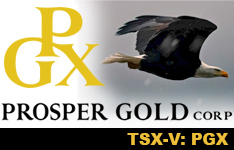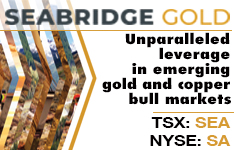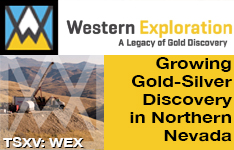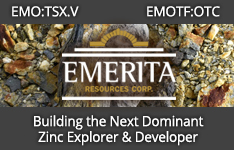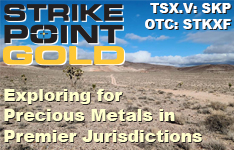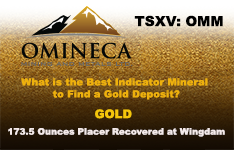TGR: Going to gold, what would you recommend our readers buy?
MCCOACH: I think people have to decide for themselves if they want to own the physical gold or paper representations of the metal, and they clearly need to understand what the differences are so they can make an intelligent decision for themselves. The paper representation would be gold ETFs or the Central Fund of Canada Ltd. (CEF-AMEX). The mining stocks would also be paper representations. They don’t represent physical gold themselves; they represent a stock.
I own AmeriGold.com. I set that up back in 1999 so that my clients could have a safe and reliable place for trading—buying and selling physical gold and silver, platinum and palladium with very low transaction costs. AmeriGold has done very well, particularly in the last six to eight months, when we’ve had a ton of people who suddenly want to own the physical metals.
I like owning the physical metals; it’s just my opinion. Some people don’t like it because it gets messy dealing with the physical metals; you have to store it somewhere. You incur storage charges if you’re putting it in a private safe or vault or depository or if you try to keep it in a safe deposit box; of course, you’ve got to pay for that. For myself, I just get a good fireproof safe, bolt it in from the inside into a concrete floor, and store it myself. Buy your physical metals.
When you pay cash for them, you own them. Right? There’s no counter-party risk. In other words, you own the metal outright. You’re in control of your financial destiny; your investment is not based on someone else’s promise. ETFs and stocks they are all based on someone else’s promise. Are those promises going to come through in this environment that in? It could be very difficult for us to have an investment that suddenly the promise fades away or disintegrates, and what are we left with? It’s not very easy or comfortable taking delivery of physical precious metals, but I think it’s in your best interest to do that at this point. If we were in a different time, back in the mid-80s or early 90s, when things were going better, paper markets were performing. There was not as much interest to do buy physical gold because paper promises were being maintained for the most part.
Well, now I see that we’re going to go through a period of a lot of broken paper promises and disintegrating paper currency, and that’s really a problem for investors. The more money you have, the bigger problem you have. Twenty percent of my portfolio is in physical metal at this point and growing quite nicely. I have been buying metal for seven years now. I keep adding to that portfolio every year, and it’s done very, very well. It’s outperformed the Dow and the NASDAQ in the last six years. There’s very little downside risk to owning the physical metals.
How high could it go? Nobody’s got a crystal ball, but obviously $1,000 gold is still very cheap in real terms. If you look at the Dow Gold chart for the last 150 years, one share of Dow and one ounce of gold have been on par multiple times, and it looks like we’re going to go to that level again. What does that mean for the Dow? And what does that mean for one ounce of gold? Does that mean it’s going to $7,000; is it going to $9,000? I don’t have a crystal ball; I don’t know, but I’m betting they will be one on one before this is over. So, where do you want to put your money? Do you want to put your money at this point or in gold? It’s gold for me.
TGR: Going back to gold, let’s talk about physical gold. Let’s assume our readers are American citizens, so what sort of coins or bars or what would you recommend?
MCCOACH: There are a lot of different organizations out there selling bars, coins, or collector coins, numismatic. I am very much opposed to the numismatic because I think that market is a ripoff. There are many people who have purchased numismatic items in the past four to five years, and gold has more than doubled, and they’re still not in the money. In other words, they still haven’t overcome the commissions and transaction costs; whereas someone who bought bullion four years ago has had a tremendous profit at this point because their commissions and transaction costs were very minimal. So, I don’t recommend numismatic items.
The bullion items I like are the bullion coins like Eagles from the U.S. Treasury, Canadian Maple Leafs, South African Krugerrands. I like Swiss 20 Francs or British Sovereigns, bars—1 oz., 10 oz. gold bars. On the silver side, I like Johnson Matthey or Englehart 100 oz. bars, Silver Rands or Silver Eagles. Those are good.
Now there are certain regulations that U.S. citizens need to understand, and most people I talk to have never heard of this. Certain precious metals are exempt from a 1099 when you sell them. I tell my clients you want to own the cheapest silver, gold, palladium, platinum that you can get your hands on that does not require a 1099 when you sell it. That means it’s a private transaction, and the government will have no record of it having ever occurred, and you are on the honor system, basically, to declare your capital gains. There are some strange things that our politicians did back in 1989-1990 when this all happened; there was no rhyme or reason to it. It just said certain items were exempted and certain items were not.
For U.S. citizens, Canadian Maple Leafs, South African Krugerrands, Mexican gold pesos, Chinese gold coins—those are 1099-able. Bars are 1099-able if you sell in excess of 33 ozs. in a calendar year. If you sell less than 33 ozs. in a calendar year, they’re not 1099-able. There are some games people could play with that. You could sell some bar ounces to one dealer and then sell 33 ozs. or less to another dealer, right. Each dealer would think that you only sold 33 ozs., so they wouldn’t issue a 1099.
What can you buy and sell without a 1099? American Eagles, Swiss 20 Francs, and Austrian Philharmonics in any quantity.
The cheapest items you can get on the gold side are the bars, the 1 oz. or 10 oz. Swiss bars, brand new in a nice plastic case with a certificate of authenticity and purity. They’re manufactured in Switzerland. I have a portion of my portfolio in those bars. Obviously, I will be very careful when I sell those so I won’t exceed the regulations and get a 1099.
The next cheapest item to the bars is the Swiss 20 Francs. I like them—they're old used coins that were used as currency years and years ago, in Europe and around the world. They were taken out of circulation a long time ago, and they have been mostly in central bank vaults. We buy them for the melt value of the gold. But, again, the nice thing about them is when you sell them, you can sell them in any quantity with no 1099. So, I like keeping a good portion of my portfolio in Swiss 20 Francs.
After that you have the 1 oz. Eagles, and Austrian Philharmonics gold coins that are exempt from the 1099. I like those but you have to understand that they’re about $25 more per ounce than a bar or a Swiss 20 Franc, right? Now, I own some; I like them, but here’s what happened. I bought most of my Eagles years and years ago when the premium, the charge made by the U.S. Treasury, was much lower. Because they’re the most popular gold coins in the world, the U.S. Treasury has a good thing going for them so they just keep raising the minting charge and they’re making a lot of money doing it. The bar fabricator in Switzerland, PAM, doesn't charge anywhere near as much as the U.S. Treasury is charging to own a 1 oz. Eagle. Now, it’s both an ounce of gold—a 1 oz. eagle or a 1 oz. Swiss bar, it’s 1 oz. of gold. You have to decide for yourself whether you want the Eagle coins. I like the Eagle; they’re pretty coins, they’re beautiful, but do you want to pay $25 more an ounce for your gold? These are the decisions that I think people need to make, as you get educated and you understand what is going on.
At AmeriGold, we always try to help educate the buyers; there’s no sales pressure with us. People figure this out for themselves, what’s in their best interest, and we try to give them the lowest transaction cost possible.
TGR: What does it cost to ship gold?
MCCOACH: You’d be surprised; it's quite inexpensive to ship it registered and insured.
TGR: So, it’s not that big a deal.
MCCOACH: Right, it’s not that big a deal. So, first of all at AmeriGold, we don’t store any metals here, because we don’t want any of the liability of handling the metals. We use depositories—there are three major depositories that we use. We just facilitate the order whether buying or selling. We give buyers the prices when they’re ready to buy. And they say, “Great, lock that in for us.” And they have three days to get their checks to us; we want personal checks. We don’t want bank checks. We want a personal check or a bank wire—either works. It takes about three days for the money to clear our bank account; once it’s cleared, it is shipped directly from our depository direct to the address they want it shipped to via the registered insured delivery. It usually goes through the Post Office; on silver, which is usually heavier, it sometimes goes through UPS. But either or, when you’re ready for it to happen, you can take delivery of it.
When you’re ready to sell, you just call us back up, and we give you the buy back price, and you don’t pay any commissions when you sell. You pay your commissions and transactions costs up front when you buy. So, when you’re selling, you’re basically just going to get the spot price on your gold. On silver, the price minus 15 cents per ounce. And that’s how it works when you’re selling. We give you a trade number when you’re buying from us; we give you a purchase order number when we’re buying from you.
Greg McCoach is an entrepreneur who has successfully started and run several businesses the past 22 years. For the last eight of these years he has been involved with the precious metals industry as a bullion dealer, investor, and newsletter writer (Mining Speculator). Greg is also the President of AmeriGold, a gold bullion dealer.
Greg's years of business experience and extensive personal contacts in the mining industry provide unique insights that have generated an impressive track record for The Mining Speculator since its inception in 2001. He also writes a weekly column for Gold World.

